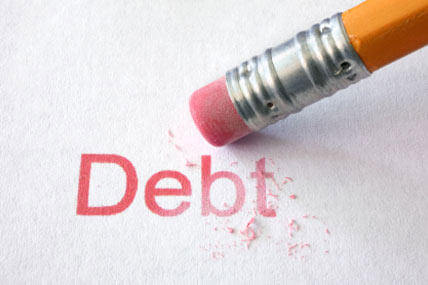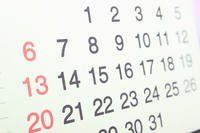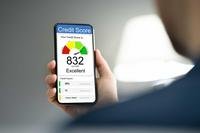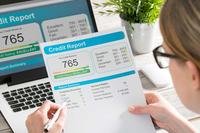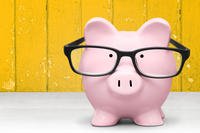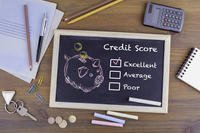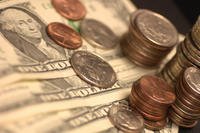Just because you can borrow money doesn't mean you should.
Good advice, but not always heeded, says Scott Halliwell, a certified financial planner™ practitioner at USAA. He says nearly a third of the questions he receives are about credit or debt.
His response is often simple: "Live your life in a way that minimizes your need to take on debt."
"That means living on less than you make and -- when debt is necessary -- using less of it than lenders are willing to give you," Halliwell says.
A Dose of Reality
"The nation's debt debate -- spending cuts, debt ceilings and government shutdowns -- has been a good wake-up call for many," Halliwell says.
Halliwell and J.J. Montanaro, a certified financial planner ™ practitioner at USAA, suggest keeping total debt payments under 36% of pretax income. To figure your debt-to-income ratio:
1. Total your monthly debt. Include your house and car payments, student debt and credit cards.
2. Take your annual salary before taxes, including bonuses, and divide by 12 to determine your pretax monthly income.
3. Divide your monthly debt by your pretax monthly income.
If your ratio is:
- Under 20%, you're in great shape.
- 20% to 36%, this is a good debt load for most people; lenders still consider you creditworthy if your credit score and other criteria are in good shape.
- 37% to 43%, your debt levels are higher than recommended. You've entered the debt danger zone.
Escaping the Danger Zone
With that reality check in mind, these tips may help you lower your reliance on credit and strengthen your ability to pay down your debt.
1. Don't spend it unless you have it. One of the most important steps to getting a handle on your debt is to stop adding to it. To the extent you can control it, stop using debt to acquire things and consider how your purchases will affect your financial situation in the long term.
2. Make a plan -- and stick to it. Know what you owe. Review all your statements and highlight current balances, interest rates and minimum payments due. Add up all your debt and decide on a plan of attack, focusing on the highest interest rate debt first. If you are past due or are close to being past due on any of your bills, you should immediately contact your creditors and seek help.
3. Establish an emergency fund. This should help keep you from having to use credit cards should something unexpected come up. You'll be working hard to get out of debt and won't want to let something beyond your control mess it up.
Your ultimate goal should be a balance equal to three to six months of committed expenses, but if you're dealing with a lot of debt, a smaller balance of perhaps $1,000 would be a good initial goal until your debt is reduced.
4. Find extra cash. Since a penny earned can be a penny that fights debt, now could be a good time to generate some cash by selling some extra items. Put the money toward your shrinking credit card bills or loans.
At the same time, consider what services you can cancel, at least until your debt is paid down. That may mean doing without storage units, cable TV, gym memberships, book and wine clubs, music downloads and in-car navigation.
5. Lower your rates. Money saved by reducing your interest rates can add up quickly. Sometimes, all it takes is a phone call to your lender to lower the interest rate on your credit cards. And here's the bonus: Using the money you're saving in interest to aggressively pay down debt can help you to eliminate it even faster.
Make Your Debts History
Apply the lessons the government is learning to your own life, Montanaro suggests.
"Sit down today and lay out a budget -- a budget where inflows exceed outflows and outflows include saving for life's emergencies and your long-term goals," he says. "Develop or follow through with your plan to eliminate debt. Don't increase your personal debt ceiling. Use our government's struggles to motivate your own actions."
